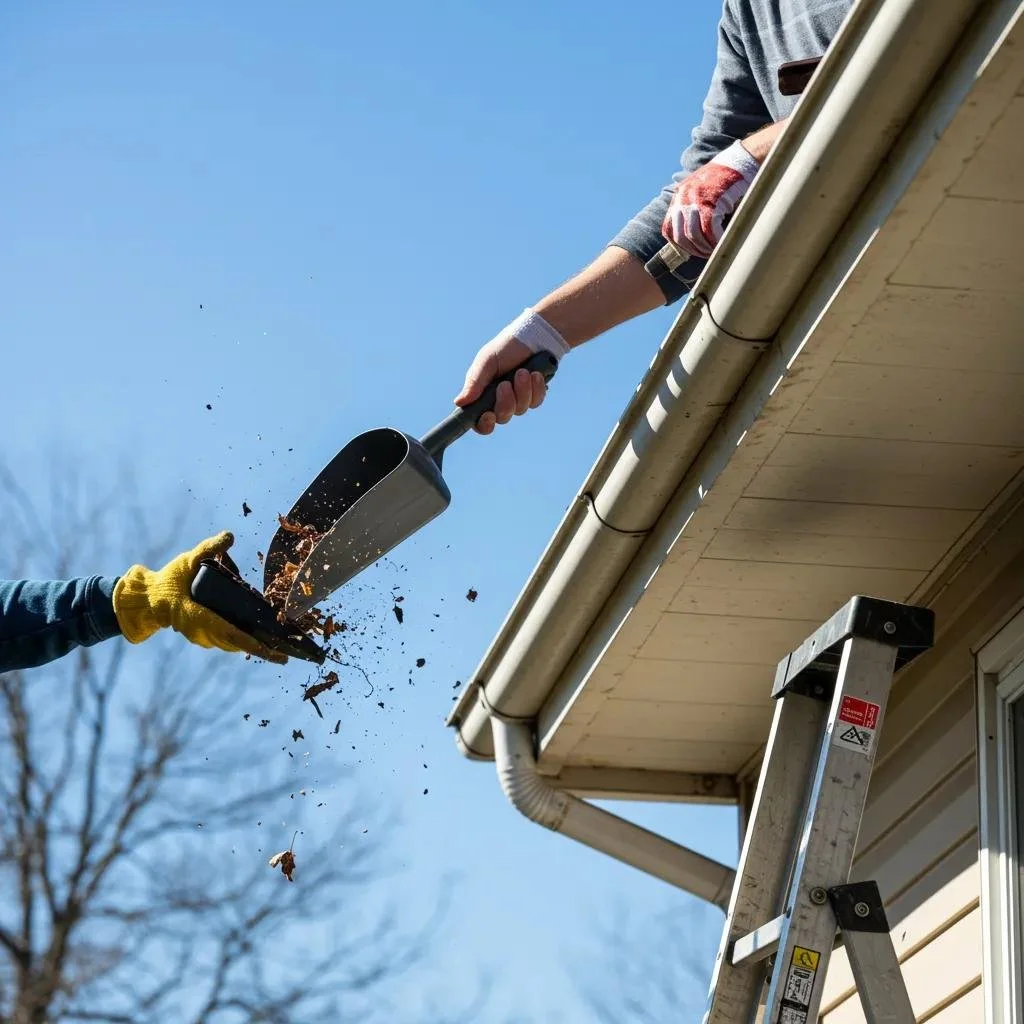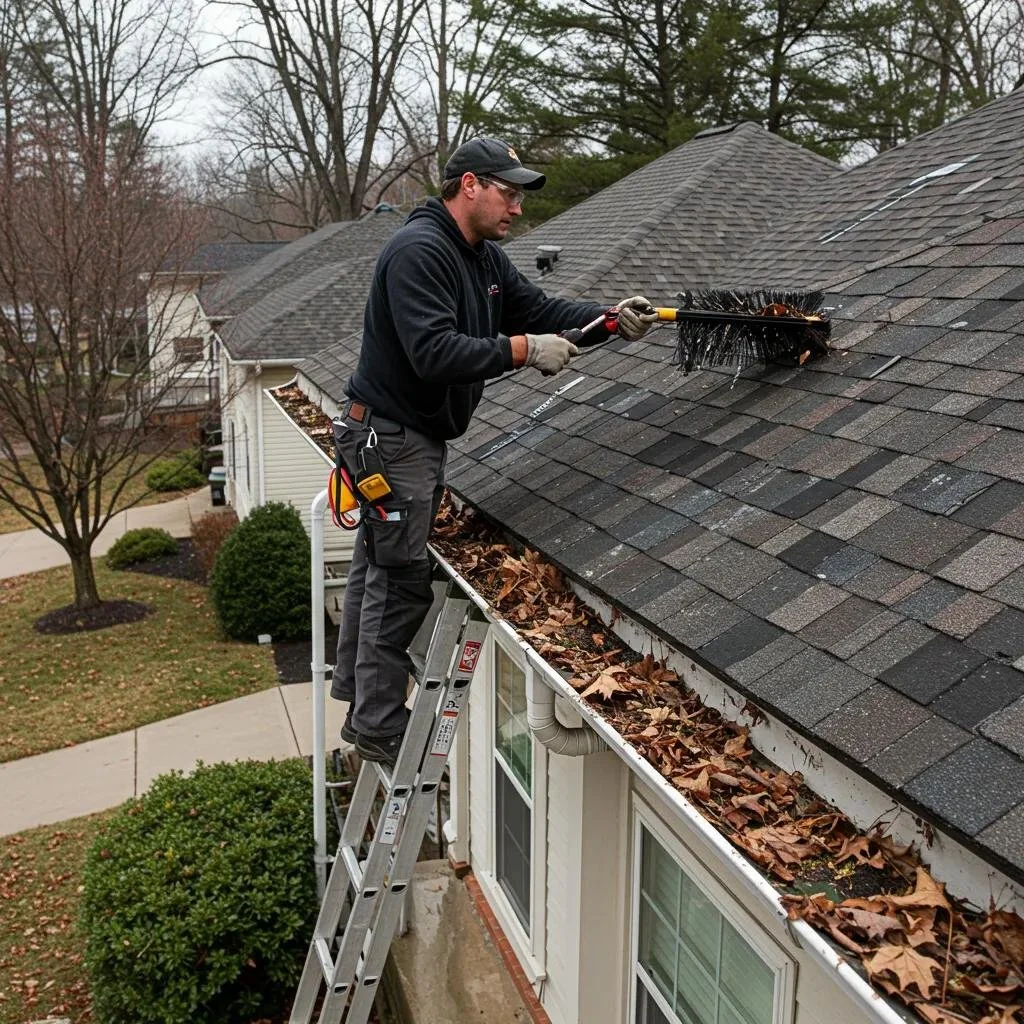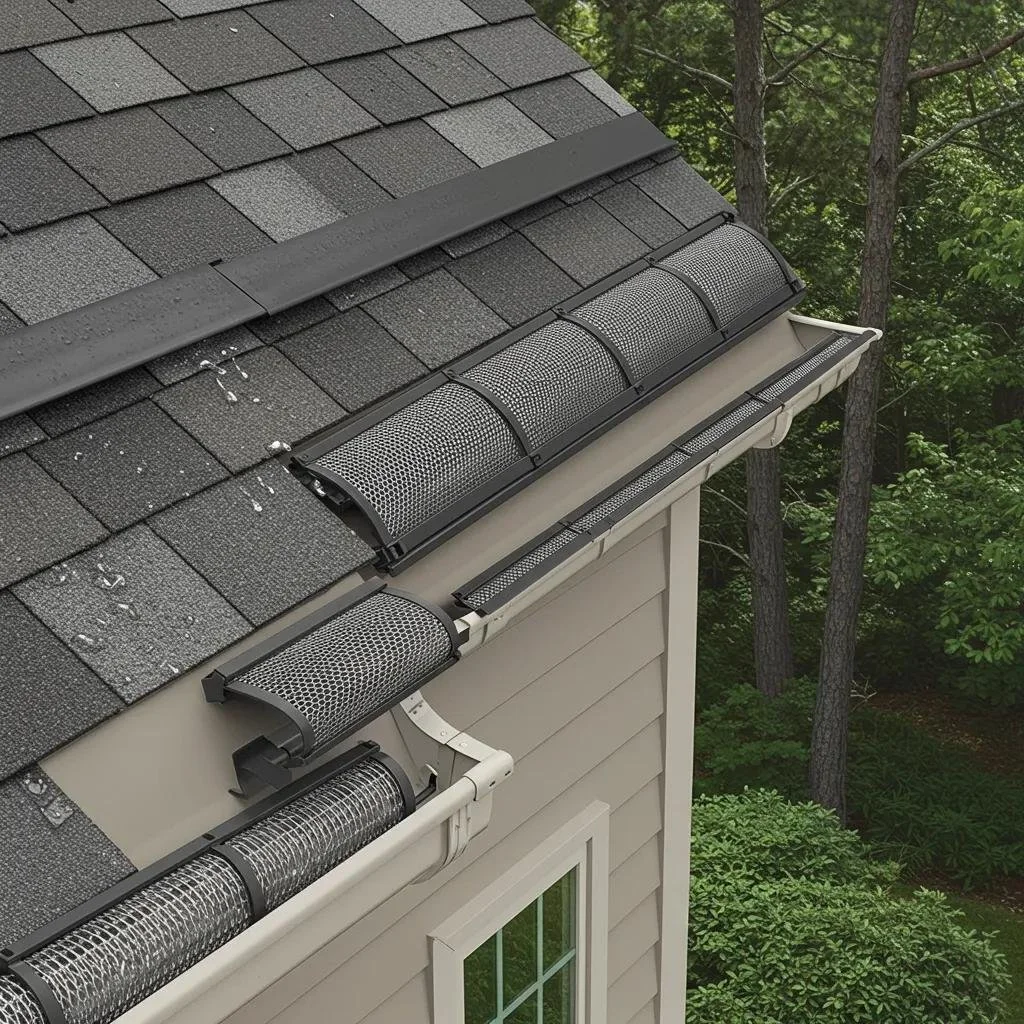Why Regular Gutter Maintenance Is Essential for Homeowners: Benefits, Risks, and Solutions
Gutters clogged with leaves and debris cause more than just overflow—they trigger costly water damage and structural decay. Understanding the importance of regular gutter maintenance empowers homeowners to protect roofs, foundations, landscaping, and property value while reducing long-term repair costs. This guide explores (1) key benefits of routine gutter cleaning, (2) risks posed by neglected downspouts, (3) optimal maintenance frequency, (4) DIY versus professional approaches, (5) gutter guard and repair solutions, (6) long-term cost savings, and (7) common homeowner questions—delivering actionable insights and highlighting professional support options such as the gutter cleaning services offered by Pegasus Window Washing.
What Are the Key Benefits of Regular Gutter Cleaning for Homeowners?
Regular gutter cleaning ensures unhindered water flow, preventing overflow that can saturate soil and basement walls. Routine debris removal restores the gutter system’s designed function—diverting rainwater safely away from roof edges and foundations to maintain structural integrity and curb appeal. For example, clearing leaves before heavy spring rains stops pooling around foundation footings and inhibits mold growth near siding.
Homeowners enjoy three primary advantages of scheduled gutter maintenance:
Water Damage Prevention – Clean channels direct runoff away from walls and basements, avoiding leaks and moisture intrusion.
Structural Protection – Unobstructed gutters safeguard roofs, fascia boards, and foundation footings from rot, cracks, and erosion.
Property Value Enhancement – A well-maintained exterior system signals careful upkeep to appraisers and prospective buyers, supporting market value.
By addressing blockages early, these benefits extend the life of roofing materials and underpin more detailed mechanisms explored in the following sections.
How Does Gutter Cleaning Prevent Water Damage to Your Home?
Gutter cleaning removes leaves, twigs, and sediment that trap rainwater, enabling gutters to channel water directly to downspouts. This prevents overflow that can seep under shingles, leading to attic leaks and interior ceiling stains. Consistent debris removal also reduces the risk of ice dams by allowing melted snow to drain freely, avoiding freeze–thaw cycles that crack eaves and gutters.
Maintaining clear gutters minimizes hydrostatic pressure against basement walls, lowering the chance of foundation seepage and mold development. The same principle preserves landscaping by averting concentrated runoff that erodes soil beds and damages plant roots—tying water management back to overall home protection.
In What Ways Does Gutter Maintenance Protect Your Roof and Foundation?
Routine debris clearance prevents water from backing up beneath roof shingles, which can cause wood rot in roof sheathing and fascia boards. By ensuring proper drainage, gutters support the roofing assembly’s ability to shed water and sustain underlayment health. At the foundation level, directed runoff keeps soil moisture consistent rather than oversaturated, reducing settlement and crack formation in concrete footings.
Over time, these protective effects slow material degradation: roof membranes remain watertight and foundation surfaces avoid hydrostatic stress. This roof-to-foundation continuity underlines how comprehensive gutter care maintains the home’s structural envelope.
How Does Regular Gutter Care Enhance Your Home’s Value?
A properly functioning gutter system is a visible sign of proactive home maintenance. Real-estate appraisers and buyers inspect exterior drainage during evaluations, weighing evidence of past neglect as potential repair liabilities. Well-maintained gutters contribute to curb appeal by preventing unsightly stains, moss growth, and wood rot around eaves.
Quantitative studies suggest homes demonstrating consistent exterior care can command premiums of 2–5%. Clean gutters also minimize insurance claims for water-related damage, providing tangible data points when presenting a property—reinforcing how preventive gutter work directly supports homeowner equity.
What Risks Do Clogged Gutters Pose to Your Home’s Structure?
Clogged gutters trap water behind debris dams, causing a cascade of structural hazards. Obstructed downspouts force water to overflow at points not engineered for drainage, eroding soil around foundations and saturating wall assemblies. Over time, stagnant water invites mold and rot in concealed wood components, undermining building durability and air quality.
Key structural threats from blocked gutters include:
Roof membrane failure and fascia decay
Foundation cracking and settlement
Siding warping and gutter hanger corrosion
Landscaping erosion and root exposure
Standing water that attracts mosquitoes, rodents, and insects
How Do Clogged Gutters Cause Roof Leaks and Rot?
When water remains pooled at the gutter–roof interface, moisture can seep beneath shingles and degrade underlayment. This hidden infiltration triggers wood rot in roof decking and fascia, eventually causing visible interior leaks. Unchecked rot also invites insect infestation and compromises barrier materials that protect living spaces from weather extremes.
What Foundation Problems Result from Poor Gutter Drainage?
Poor drainage allows runoff to accumulate at the foundation base, raising hydrostatic pressure behind basement walls. This drives water through mortar joints and hairline cracks, causing basement flooding, efflorescence, and mold growth. Soil washed out by overflow can undermine footings, resulting in settling, misalignment of doors and windows, and structural cracks.
Consistent gutter performance channels water beyond the foundation perimeter, protecting underground structures and maintaining basement dryness.
How Can Neglected Gutters Lead to Fascia, Siding, and Landscaping Damage?
Overflowing water cascades over eaves, saturating fascia boards and encouraging wood decay. Painted siding becomes stained, blistered, or warped from persistent moisture exposure. Around the home’s perimeter, unchecked runoff displaces topsoil, washes away mulch, and drowns plant roots—leaving landscapes vulnerable to erosion and plant death.
By preserving proper flow paths, routine gutter care maintains the aesthetic and botanical health of the exterior environment.
What Pest Infestations Are Attracted by Standing Water in Gutters?
Stagnant water in clogged gutters creates ideal breeding grounds for mosquitoes, which can carry disease. Accumulated debris also shelters rodents, birds, and insects seeking nesting sites, increasing risks of parasite transmission and property damage. Regular cleaning disrupts these habitats, minimizing health hazards and pest control costs.
Effective debris removal maintains hygienic channel conditions and supports broader home sanitation efforts.
How Often Should Homeowners Perform Gutter Maintenance?
Yes, homeowners should schedule gutter maintenance at least twice annually to keep systems clear and functional. Experts recommend spring cleaning to handle winter debris and fall cleaning to remove autumn leaves before freezing temperatures. Properties with dense tree cover often require quarterly inspections to manage accelerated leaf drop and pine needle accumulation.
Seasonal factors influence cleaning needs:
Spring Inspection – Clears seed pods, pollen, and winter debris before heavy rains.
Fall Clearance – Removes leaves and twigs to prevent ice dam formation.
High-Tree Coverage – Quarterly checks for homes under dense foliage ensure uninterrupted flow.
Adhering to these intervals prevents debris build-up from exceeding the gutter’s capacity, safeguarding against water intrusion and structural harm throughout the year.
What Is the Recommended Frequency for Gutter Cleaning?
Homeowners should clear gutters at minimum in early spring and late fall, aligning maintenance with peak debris seasons. Properties shaded by evergreens or surrounded by oaks may need an extra mid-summer and mid-winter cleaning to handle persistent needle and acorn buildup. This twice-or-more annual schedule minimizes blockage risk and mitigates damage from heavy precipitation events.
How Do Seasonal Changes Affect Gutter Maintenance Needs?
Spring storms deposit broken branches and frost-thawed sticks, while summer growth can lead to roof moss and seed dispersion into channels. Autumn leaf fall rapidly overwhelms gutters, and winter ice dams form if meltwater cannot exit. Adapting cleaning frequency to these cycles ensures gutters perform reliably under varying weather conditions.
When Should You Increase Cleaning Frequency Due to Tree Coverage?
Properties under deciduous or evergreen canopies accumulate clogs faster, warranting quarterly or even monthly checks during heavy leaf shed. Proximity to pine or maple trees often requires targeted roof sweeps and downspout flushing to address persistent needle deposits—maintaining uninterrupted drainage and preventing small blockages from escalating into major overflows.
What Are the Differences Between DIY Gutter Cleaning and Professional Services?
DIY gutter cleaning empowers homeowners to save on service fees but carries safety risks and often lacks thoroughness. By contrast, professional services provide comprehensive inspections, debris removal, downspout flushing, and system assessments with specialized equipment. Both approaches clear blockages, but professional execution reduces liability and enhances long-term system health.
| Service Aspect | DIY Cleaning | Professional Service |
|---|---|---|
| Safety | Ladder-related fall risk | Certified technicians use safety harnesses and scaffolding |
| Thoroughness | Basic debris removal only | Full system inspection, minor repairs, and flushing |
| Time Investment | Several hours per session | Efficient teams complete in under two hours |
| Equipment | Hand tools, garden hose | High-pressure water systems, telescoping vacuums |
| Cost Consideration | Low upfront cost but potential repairs | Service fee plus reduced long-term repair expenses |
This comparison highlights how professional expertise complements homeowner efforts by addressing safety, efficiency, and system longevity.
What Are the Safety Tips and Tools for DIY Gutter Cleaning?
When cleaning gutters yourself, always secure a stable ladder on level ground and wear non-slip footwear. Use safety gloves and goggles to prevent cuts from sharp debris. A gutter scoop, roof broom, and extension hose facilitate thorough clearance. Never lean sideways on a ladder—move it frequently to maintain balance. Following these precautions reduces injury risk and helps achieve a cleaner result.
What Are the Benefits of Hiring Professional Gutter Cleaning Experts?
Professional gutter cleaning experts offer certified safety protocols, advanced downspout flushing equipment, and roof-edge inspections that detect early damage signs. Their service includes minor repairs such as re-securing hangers and sealing leaks. This comprehensive approach prevents hidden blockages in unseen elbow joints and ensures the entire drainage system functions optimally—saving homeowners time and minimizing liability.
When Is It Best to Hire a Professional for Gutter Maintenance?
Homeowners should consider professional gutter maintenance when ladders feel unsafe, when past DIY attempts left debris in elbow joints, or when the roof pitch exceeds standard angles. Properties with multi-story elevations or complex downspout layouts benefit most from expert technicians who carry insurance and specialized tools—delivering deeper cleaning and early damage detection.
How Does Pegasus Window Washing Provide Reliable Gutter Cleaning Services?
Pegasus Window Washing delivers professional gutter cleaning with a certified safety team, high-pressure flushing equipment, and a full inspection of gutter components. Technicians remove blockages, reseal minor leaks, and realign brackets for optimal water flow. Customers receive a post-service report detailing system condition, ensuring transparency and peace of mind.
How Do Gutter Guards and Other Solutions Reduce Maintenance Needs?
Gutter guards act as a first-line filter, blocking leaves and large debris from entering the channel while allowing water to flow through micro-mesh or reverse-curve systems. These guards reduce the frequency of manual cleaning and inhibit pest nesting. Complementary solutions include gutter repair, downspout extensions, and seamless gutter installations that enhance durability and minimize leak points.
| Guard Type | Feature | Benefit |
|---|---|---|
| Mesh Screens | Fine stainless-steel weave | Blocks small particles, easy to retrofit |
| Reverse-Curve Systems | Curved edge directs water into gutter | Prevents leaf accumulation, low maintenance |
| Foam Inserts | Porous foam fills trough | Simple DIY installation, moderate debris blockage |
| Brush Guards | Cylinder brush inside gutter | Catches large leaves, allows water passage |
What Types of Gutter Guards Are Available and What Are Their Pros and Cons?
Homeowners can select from micro-mesh screens, reverse-curve deflectors, foam inserts, and brush guards. Micro-mesh offers the finest filtration but requires professional installation. Reverse-curve systems divert water over a shield and into the trough yet need precise mounting to avoid overshoot. Foam inserts are affordable DIY options but may trap small debris within the foam. Brush guards are simple to install yet allow some leaf fragments to enter.
Gutter Screens vs. Cleaning: Preventing Debris Buildup
Although a leaf guard or gutter screen can keep large debris out of the gutter, it is not a substitute for cleaning. Leaf guards can become clogged themselves and may need to be cleaned periodically. They can also be ineffective against smaller debris like shingle grit or pine needles, which can accumulate and cause blockages. Regular gutter cleaning remains the most effective way to ensure proper water flow and prevent damage.
While gutter guards can help, they are not a complete solution for debris management.
When Is Gutter Repair or Replacement Necessary?
Signs for gutter repair include visible sagging, rust holes in metal troughs, cracked end caps, and loose hangers. Replacement becomes essential when more than 50% of the system shows corrosion, repeated joint leaks appear, or seamless gutter failures compromise water flow. Prompt action restores proper drainage and prevents recurring maintenance burdens.
What Should a Seasonal Gutter Maintenance Checklist Include?
An effective seasonal checklist covers:
Visual Inspection – Check for sagging, rust, and joint leaks.
Debris Removal – Scoop out leaves, flush downspouts with water.
Component Check – Tighten brackets, reseal seams, clear splash blocks.
Water-Flow Test – Run water from roof edge to verify end-to-end drainage.
Automated solutions are emerging to assist with the task of gutter cleaning.
Automated Gutter Cleaning: Safety, Accessibility, and Efficiency
The Gutter Cleaning Robot addresses the issues of safety, accessibility, and efficiency. By automating gutter cleaning, the robot can mitigate the safety risks associated with manual cleaning, such as falls from ladders. It also improves accessibility for individuals who may have difficulty performing the task themselves. Furthermore, the automation enhances efficiency, ensuring that gutters are cleaned more thoroughly and regularly.
These advancements aim to make gutter maintenance safer and more efficient.
How Does Regular Gutter Maintenance Save Homeowners Money Long-Term?
Proactive gutter maintenance averts water damage expenses, structural repairs, and landscaping restoration costs that often exceed routine cleaning fees by tenfold. By directing rainwater away from vulnerable areas, homeowners reduce insurance claims for basement floods and roof leaks and preserve the building envelope.
Quantitative estimates show that every dollar spent on gutter maintenance may prevent five to ten dollars in repair bills—highlighting the economic efficiency of scheduled exterior care.
What Is the Cost of Damage Caused by Neglected Gutters?
Average repair costs for water-damaged siding range from $1,500 to $4,000, while foundation crack remediation can exceed $10,000. Roof deck replacement due to rot often costs between $5,000 and $8,000.
How Does Gutter Maintenance Reduce Home Insurance Claims?
Insurers classify water damage from exterior drainage failures as preventable loss. Regular gutter cleaning lowers the frequency of covered claims, leading to fewer rate hikes and reduced deductibles. Homes with documented maintenance records often qualify for discounts or credits, reflecting insurer confidence in proactive risk management.
How Does Maintaining Gutters Protect Your Home’s Market Value?
A well-documented history of exterior maintenance, including gutter service, demonstrates comprehensive care to appraisers and prospective buyers. Clean gutters prevent unsightly stains and structural decay that reduce curb appeal. Studies indicate that preventive maintenance can preserve up to 95% of a home’s resale value, translating routine cleaning into tangible equity retention.
What Are Common Questions Homeowners Ask About Gutter Maintenance?
Homeowners frequently seek concise answers to scheduling, costs, and damage risks. The following questions address top concerns and provide clear, featured-snippet optimized guidance.
How Often Should Gutters Be Cleaned?
Gutters should be cleaned at least twice a year—in spring and fall—to remove seasonal debris. Properties under dense tree cover may require quarterly or more frequent service to prevent blockages and water intrusion.
What Happens If You Don’t Clean Your Gutters?
Failure to clean gutters leads to overflow that damages roofing membranes, fascia, siding, and foundation structures. Standing water also fosters mold growth and pest infestations, resulting in costly repairs and health hazards.
Is Professional Gutter Cleaning Worth the Cost?
Professional gutter cleaning offers safety, thorough debris removal, system inspection, and minor repairs—reducing long-term maintenance expenses and liability. While DIY saves on labor fees, professionals ensure complete clearance and early damage detection, protecting overall property health.
For those seeking a simpler approach to debris management, compact and user-friendly devices are available.
Smart Rain Gutter Cleaner: Ease of Use and Debris Management
The rain gutter cleaner is also designed and built to see the effectiveness of the current level of security used and able to assist make it easier for users. Simple and compact design can be beneficial for homeowners looking for a low-maintenance solution to keep their gutters clear of debris.
These innovations aim to simplify the process of keeping gutters clear.
Can Clogged Gutters Cause Roof Damage?
Yes, clogged gutters cause water to back up under shingles, leading to roof deck rot, underlayment failure, and interior leaks. Regular maintenance preserves shingle integrity and prevents hidden moisture pathways that compromise roofing assemblies.
How Much Does Professional Gutter Cleaning Cost?
Professional gutter cleaning typically ranges from $140 to $300 per visit, depending on roof height, gutter length, and debris severity. Bundling with window washing or pressure washing services often provides cost savings and comprehensive exterior care.
Routine gutter maintenance delivers measurable benefits in water management, structural protection, cost savings, and market value preservation. By following seasonal checklists, evaluating guard systems, and choosing the right balance between DIY efforts and professional services like those from Pegasus Window Washing, homeowners secure long-term resilience for their properties. Investing in timely gutter care today prevents expensive repairs and supports peace of mind for years to come.



